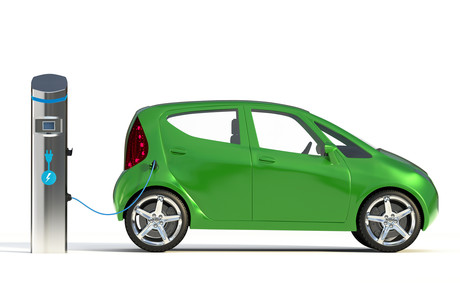Pop-up electric vehicle charging points trial

The City of Oxford is set to become the first city in the world to trial ‘pop-up’ on-street electric vehicle charging points.
The pop-up charging points will be made by Urban Electric Networks, which led the project bid. The bid was made in partnership with Duku and Oxford City Council and has been awarded £473,595 in funding. The overall cost of the project will be £600,000, with the remaining funding coming from Urban Electric via private investment.
The project will see 20 ‘UEone’ retractable pavement bollards installed on streets with on-road, off-pavement parking. The UEone was developed specifically to provide charging for the 43% of UK households who have on-street parking.
The charging points will be app-operated and will retract underground when not in use. They charge at up to 5.8 kW and retract underground when not in use, minimising the impact on the urban environment.
Standard height when raised, yet requiring an installation depth of just 405 mm, the UEone is suitable for more than 90% of residential streets. Its unobtrusive design and grid demand management capability means that whole streets can be electrified at a time without the unsightly street clutter usually associated with traditional charging posts, expensive grid reinforcement or the need for EV Only bays. The UEone uses the same SmartCable as ubitricity lamp posts, meaning that residents will be able to charge at any UEone pop-up or ubitricity lamp post, creating a new standard for urban residential charging.
The funding was awarded under Innovate UK’s strand 2 Infrastructure Systems competition. Innovate UK is the UK’s innovation agency, working with people, companies and partner organisations to find and drive the science and technology innovations that will grow the UK economy.
The project will support the existing Go Ultra Low Oxford on-street residential charging project. The project is a trial by Oxford City Council and Oxfordshire County Council, aiming to reduce air pollution and further lower Oxford’s carbon emissions. It has been made possible by a £800,000 grant from the government’s Office for Low Emission Vehicles (OLEV). The scheme has seen 100 electric vehicle charging points installed in residential streets across Oxford. It is thought to be the first on-street charging pilot of its size in the world.
In order to tackle harmful air pollution levels across Oxford, Oxford City Council and Oxfordshire County Council announced plans in October 2017 to introduce the world’s first Zero Emission Zone in Oxford city centre. The zone will restrict vehicles in phases, taking into account the best available technology, starting with some vehicle types and a small number of streets in 2020 and, as vehicle technology develops, moving to all vehicle types across the whole city centre in 2035.
Its full implementation would take air pollution levels in Oxford city centre down to near-background levels. For example, in the city centre’s most polluted street (George Street), a 74% reduction in toxic nitrogen dioxide (NO2) levels is expected by 2035.
The new money is part of a wide range of Oxford City Council projects — worth £3.25m in total — to help businesses and residents prepare for the Zero Emission Zone, including securing: £500,000 of government funding to install 19 electric vehicle charging points for the exclusive use of hackney and private hire taxis; £1.7m of government funding to upgrade five sightseeing buses to be fully electric and 78 local buses to become ultralow emission; and £800,000 of government funding to install 100 electric vehicle charging points for residents across Oxford as part of a globally significant research trial.
Olivier Freeling-Wilkinson, co-founder of Urban Electric, said: “The cheapest, most convenient and grid-friendly way to charge an EV is at home at night, yet up to 85% of households in some urban residential areas cannot do so because they park on-street, acting as a barrier to EV adoption.
“By giving certainty of access to a home-based charge point for on-street residential parking zones, the UEone makes it possible for local authorities to enable the 11.3m UK households currently excluded from driving an EV with the ability to do so without spoiling street aesthetics.
“By installing an oversupply of charging bollards in a street from day one, we are creating an abundance of charging spaces that will give consumers without off-street parking the confidence to switch to an EV.”
2025–26 GenCost report released for public consultation
Solar PV and onshore wind still form the basis for Australia's cheapest electricity...
ARENA invests $21m in three EV charging projects
Funded under the Driving the Nation Program, the projects will focus on developing pathways and...
New facility to boost homegrown solar PV manufacturing
A major solar module manufacturing facility is due to be developed in the NSW Hunter Valley,...



